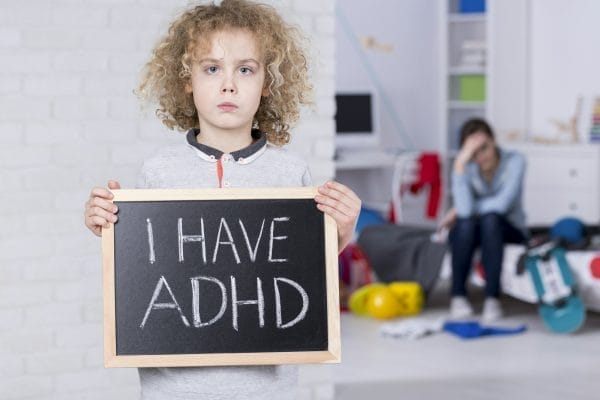ADHD Symptoms Across Different Ages and Genders
Attention-Deficit/Hyperactivity Disorder (ADHD) is a neurodevelopmental disorder characterized by a consistent pattern of inattention, hyperactivity, and impulsivity that interferes with functioning or development. ADHD symptoms can vary widely from person to person and across different ages and genders. Recognizing these symptoms is crucial for early intervention and management of the condition.
This article will delve into the various manifestations of ADHD symptoms in toddlers, kids, girls, boys, and adults to provide a comprehensive understanding of this disorder.

ADHD Symptoms in Toddlers
![]()
Identifying ADHD symptoms in toddlers can be challenging, as many typical toddler behaviors mimic ADHD characteristics. However, certain signs may indicate a higher likelihood of ADHD:
- Excessive running, climbing, or jumping when it’s not appropriate
- Difficulty settling down for naps or bedtime
- Frequent tantrums and difficulty calming down
- Short attention span for age-appropriate activities
- Struggles to follow simple instructions
- High levels of impulsivity, such as grabbing toys without permission
It’s important to note that these behaviors alone do not confirm ADHD, and a professional evaluation is necessary for a diagnosis.
ADHD Symptoms in Kids
![]()
As children grow, ADHD symptoms often become more distinct and easier to identify. Common ADHD symptoms in kids include:
- Inattentiveness: trouble focusing on tasks, forgetfulness in daily activities, and frequent mistakes in schoolwork
- Hyperactivity: often “on the go,” talking excessively, and difficulty participating in quiet activities
- Impulsivity: interrupting conversations, inability to wait for a turn, and acting without thinking of the consequences
These symptoms can lead to challenges at school, such as unfinished tasks and difficulty organizing activities. Social difficulties may also arise, as kids with ADHD can struggle with maintaining friendships due to their impulsive behavior.
ADHD Symptoms in Girls
![]()
ADHD in girls is often underdiagnosed or diagnosed later in life compared to boys, partly because their symptoms can be less overt. Girls with ADHD may exhibit symptoms such as:
- Daydreaming and appearing to be “in their own world”
- Being talkative and interrupting conversations
- Displaying emotional sensitivity and mood swings
- Having difficulty maintaining focus on tasks or completing homework
- Struggling with time management and organizational skills
These inattentive symptoms may be mistaken for a child’s personality rather than signs of ADHD, leading to later diagnosis and treatment.
ADHD Symptoms in Boys
![]()
Boys are generally diagnosed with ADHD more frequently than girls, and their symptoms are often more recognizable. Common ADHD symptoms in boys include:
- Physical hyperactivity, such as constantly moving, fidgeting, and an inability to sit still
- Risk-taking behaviors and a lack of sense of danger
- Aggressive play and difficulties getting along with peers
- Irritability and a short temper
- Impatience and a tendency to interrupt or blurt out answers in class
These more noticeable symptoms can lead to boys being diagnosed earlier than girls, allowing for earlier intervention.
ADHD Symptoms in Adults
![]()
ADHD does not only affect children; adults can also live with the disorder. In adults, ADHD symptoms can manifest in various ways, impacting personal and professional life. Common symptoms include:
- Chronic procrastination and difficulty starting tasks
- Impulsiveness in decision making or spending
- Disorganization and problems prioritizing tasks
- Frequent mood swings and difficulty coping with stress
- Restlessness and seeking constant stimulation
- Issues with maintaining relationships and stable employment
Since ADHD can be overlooked in adulthood, individuals may struggle for years without understanding the root of their challenges. Recognizing these symptoms can lead to life-changing support and treatment.
ADHD Diagnosis and Treatment
![]()
Diagnosing ADHD involves a comprehensive evaluation by a healthcare professional, often including a physical exam, a series of interviews, and psychological tests. Treatment typically consists of a combination of medication, therapy, education, and lifestyle changes. It’s important to tailor the approach to the individual’s specific needs, as ADHD affects each person differently.
Case Studies and Statistics
![]()
Case studies and research have provided insights into the prevalence and treatment of ADHD. For example, a study might follow a young girl with inattentive symptoms who was initially overlooked but later received the necessary support and improved academically and socially. Statistics indicate that ADHD affects about 5% of children and 2.5% of adults worldwide. Understanding the real-life implications of ADHD through case studies and data can help destigmatize the disorder and promote awareness.
Conclusion
![]()
ADHD symptoms can vary significantly, appearing differently in toddlers, kids, girls, boys, and adults. Recognizing these signs is essential for obtaining a timely diagnosis and effective treatment. By staying informed and aware of the nuances of ADHD, parents, educators, and individuals can better support those affected by the disorder. The key is to understand that while ADHD presents challenges, with the right strategies and support, individuals with ADHD can lead successful and fulfilling lives.





